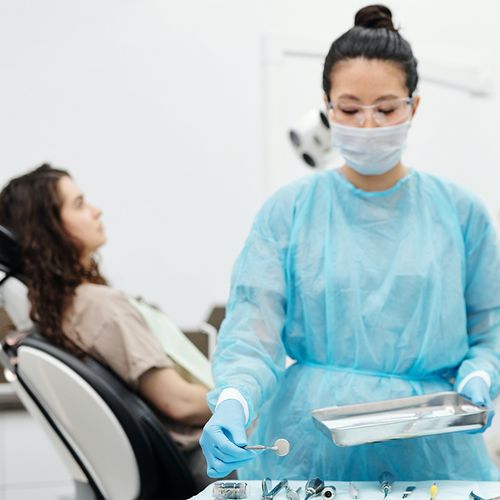A new surgical procedure may be life-changing-even potentially life-saving-for people with chronic asthma who haven't been able to get relief from the standard treatments. Called bronchial thermoplasty, the procedure was recently approved by the FDA. It's being done at only 32 hospitals around the country, but the list is growing, and it is worth exploring as a treatment if you or someone you are close to is suffering recurrent asthma attacks that have not been helped by traditional treatments. Thus far, the evidence suggests that this procedure, the first FDA-approved non-drug treatment for asthma, dramatically reduces the occurrence of asthma attacks and improves asthma-related quality of life.
It's estimated that more than 23 million Americans (including seven million children suffer from asthma, a chronic disease that inflames and narrows airways. Some individuals are born with a predisposition to asthma due to allergies or develop it from exposure to secondhand smoke, while in others the causes may be more unpredictable, such as viral illnesses.
In people with asthma, the layer of smooth muscle that surrounds the airways becomes thicker and more reactive to certain triggers, explained Sumita B. Khatri, MD, co-director of the Asthma Center at the Cleveland Clinic's Respiratory Institute. When a person with asthma has an attack, the muscles around the airways constrict and go into spasm, narrowing the airways and leading to shortness of breath, tightness in the chest and other distressing symptoms.
Reduces Swelling In Airways
In contrast to asthma medications that target inflammation and may secondarily reduce some of the muscle thickening, bronchial thermoplasty treats the airways directly with heat created by radio-frequency waves.
The treatment is apparently quite effective. A randomized, double-blind controlled study of about 300 patients found that those who underwent bronchial thermoplasty experienced vastly improved asthma-related quality of life in the 12 months afterward, including…
- 32% reduction in asthma attacks, on average.
- 84% drop in visits to hospital emergency rooms.
- 66% reduction in lost work or school days.
- 73% decline in hospitalizations for respiratory problems.
Dr. Khatri said that two years after the first clinical trials, the improvements are still in place-including not only a reduction in symptoms overall but also in the frequency of severe asthma flare-ups and hospitalizations. Many patients also have reduced their need for rescue emergency medications as well, she said.
Treatments Aren’t Painful
Bronchial thermoplasty takes place over three one-hour sessions scheduled three weeks apart. In each procedure, the patient receives light sedation-many actually fall asleep. Each of the three treatments targets a different area of the lungs—in the first session, the airways of the right lower lobe...in the second, the left lower lobe...and in the third, the airways in both upper lobes.
What's involved: The pulmonologist threads a long, flexible tube called a bronchoscope down the mouth or through the nose and into an airway in the lung. Inside the bronchoscope, a special thermoplasty catheter contains electrodes that are heated with radio-frequency energy. This shrinks the muscle, which is believed to prevent the extreme airway muscle contractions during asthma attacks. "This result is expected to be permanent, but there is still not enough data yet to know for sure," Dr. Khatri said.
There are no pain-sensing nerves in the airways, so the application of thermal energy does not hurt, notes Dr. Khatri. Patients are monitored for several hours afterward because symptoms sometimes worsen in the short term. To reduce the likelihood that this will happen, patients take a five-day course of steroids before and after surgery. Though bronchial thermoplasty often is done as an outpatient procedure, Dr. Khatri said that the Cleveland Clinic keeps patients overnight as an added safety precaution. She added that in the immediate period after the procedure, some patients experience discomfort similar to an asthma flare-up, requiring use of rescue/symptom relieving medications. Also, many patients have a sore throat from the bronchoscope, while other possible transitory side effects are chest discomfort or pain, partial lung collapse (serious but treatable), headaches, anxiety and nausea.
Are You A Candidate?
Bronchial thermoplasty is FDA-approved only for people age 18 and older with severe ongoing asthma symptoms that are not well-controlled with regular asthma medications. It can't be performed on smokers, people with active respiratory infections or people who have heart arrhythmias or have implanted pacemakers, defibrillators or other electronic devices.
Bronchial thermoplasty is expensive-as much as $15,000 or more-and since it is still considered experimental, Medicare doesn't cover it and neither do most insurers. However, Dr. Khatri expects this to change as time goes on and more and more patients experience significant health benefits after bronchial thermoplasty.
